All-in-one WiFi & cell data: Glomex WebBoat 4G & The WiriePro
There are two reasons I was a little surprised to read that the Glomex WebBoat 4G won a DAME award this morning at METS. It seems like a minor update to the WebBoat 3G that Kees Verruijt covered here last year, and I thought that the DAME 2014 electronics and software nominees included several strong contenders. On the other hand, I know how hard it is to be a judge, and I thoroughly agree with their statement that WebBoat's all-in-one approach to marine WiFi and cell communications addresses, "an area of rapidly growing interest in the marine industry." I can't count how many cruisers I met recently who were struggling with Internet connectivity, even along the U.S. coast. And I'm happy to report that another all-in-one solution, The WiriePro, will soon be available...
First let's explore the WebBoat, specifications here (and also the manual). Inside the 12-inch high dome are two diversity antennas and a modem able to handle a whole lot of cellular frequencies and data protocols (though not some types found outside Europe). There's also a high power WiFi antenna and radio for near shore connections, plus a router that joins both types of communications and serves them to devices on the boat via another WiFi radio and antenna. Kee's cutaway photo above shows the original 3G model, but I doubt the 4G looks much different. Note that the router and onboard WiFi module can be moved below with an Ethernet cable if metal decks block the WiFi, and that the dark tubular piece at lower left houses a cellular SIM card slot with an access door on the dome's bottom.
Managing the WebBoat is done with Android or iOS apps as illustrated in the main page video. Once set up there shouldn't be much to do except scan for a new WiFi hotspot when you change harbors or force use of the cell connection if the WiFi gets flaky. But the original setup or changing SIM cards could be challenging and I encourage prospective buyers to check out the manual carefully. For instance, the correct APN (Access Point Name) has to be chosen by region and provider, and I'm not sure they're all there. Also note that a prepaid SIM card with a PIN has to be unlocked in a phone before going into the WebBoat.
But once set up -- and note that the only cabling required is a 12 volt power feed -- the WebBoat does seem as dreamy as this video capture suggests. It prioritizes the WiFi booster so that in harbor you may have a cheaper and possibly faster connection. But as you cruise out of WiFi range, WebBoat automatically switches over to the cell connection and all devices connected to the onboard WiFi remain online, so you're still blissfully sending off romantic selfies (or checking the weather, or keeping up with work email, or whatever :-).
The devil's in the details, though, especially with technologies as fussy and dynamic as WiFi and Cellular hotspots on boats. That's why I lean more toward the new all-in-one WiriePro even though its hardware looks, um, more utilitarian and it doesn't auto switch between cellular and WiFi connections. That's it in the yellow waterproof box at left, with its high power cell and WiFi antennas mounted externally. Also external is a waterproof Ubiquity Bullet M2 Titanium WiFi Adapter -- latest and most ruggedly built in the Bullet line I've long appreciated. The company has also updated its WiFi-only WirieAP+ (at right) with Titanium and will soon have a cell-only Wirie xG.
Besides the high quality components, I like the look of Wirie's browser-based management software. Note how the background screen above shows the status of all three networks that an all-in-one like this enables. The inset cellular interface screen shows how the WiriePro lets you apply a PIN to a SIM card, and that's not all...
The background screen in this collage shows how you can send SMS messages via the WiriePro interface, which is quite handy for adding credit to prepaid SIM cards. In fact, you can see that Wirie developer Mark Kilty has been doing just that, in French. The inset WiFi scan screen -- which seems nicely simplified since I tested the original WirieAP in 2011 -- also has a French Polynesian flavor, and that's because the sailing development lab Irie has gone many miles and done lots of Internet chasing since I first profiled the product.
I appreciate the experience behind the new WiriePro all-in-one WiFi and cellular communicator and also the company's willingness to put their specs into the product comparison below. It may not be completely accurate -- for instance, the WebBoat column probably needs updates for the new 4G model -- but it's a good place to start if you're interested in the potential ease of having both offboard WiFi and cell connections working through one onboard WiFi router. I'll add, though, that I just spent two months using separate WiFi and cell booster systems with pretty good results, and I'll be expanding on that experience soon.
PS 11/21: Berislav Ortynski of Locomarine wrote in to say that his company also introduced 4G cell boosters to go with their Yacht Router line at METS. See impressive display below and Berislav's full note in comment further below.

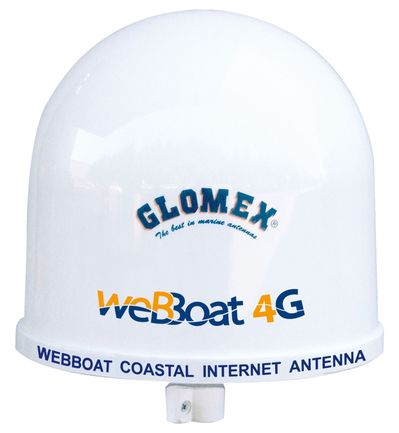
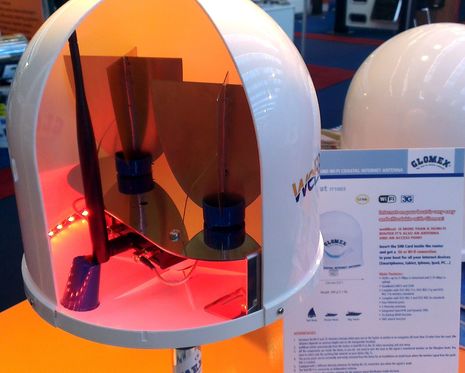
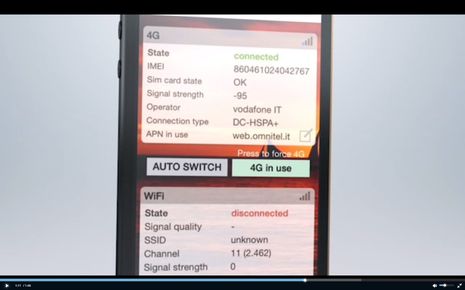
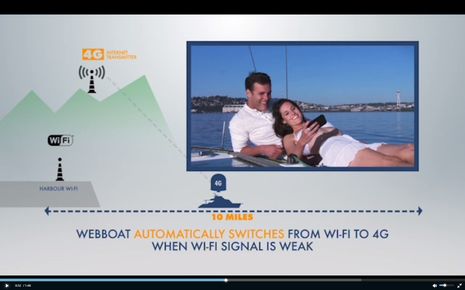
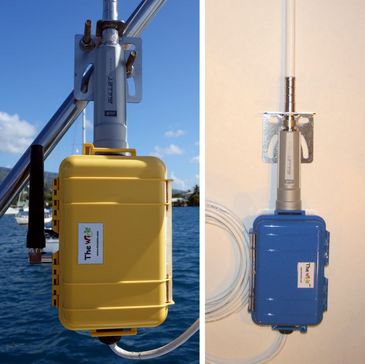
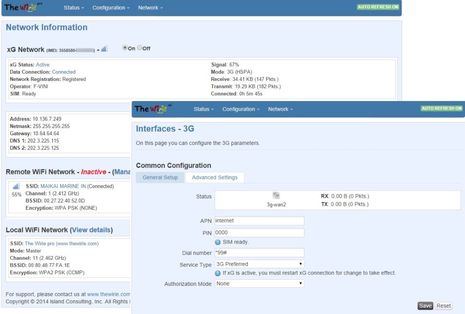
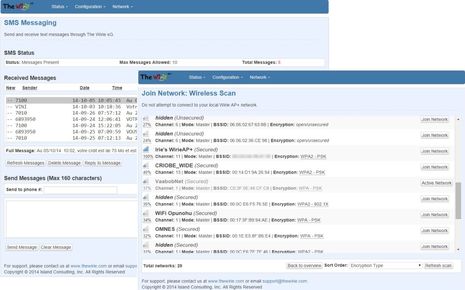
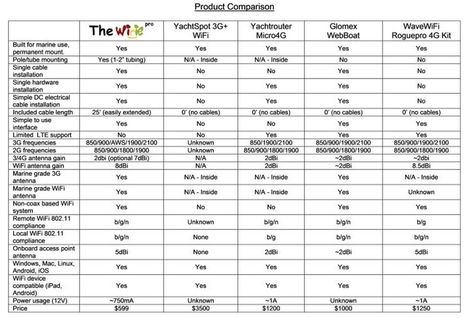
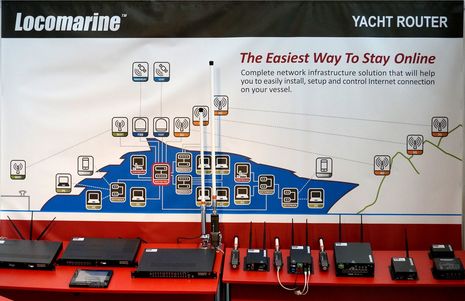
 Share
Share
Interesting. Another new product at METS, the Traveltronic All.In.One, is something like the WebBoat -- add power to dome, get two types of Internet via WiFi -- except it uses GSM cellular and V-SAT for almost anywhere coverage:
http://traveltronic.net/index.php?id=3397